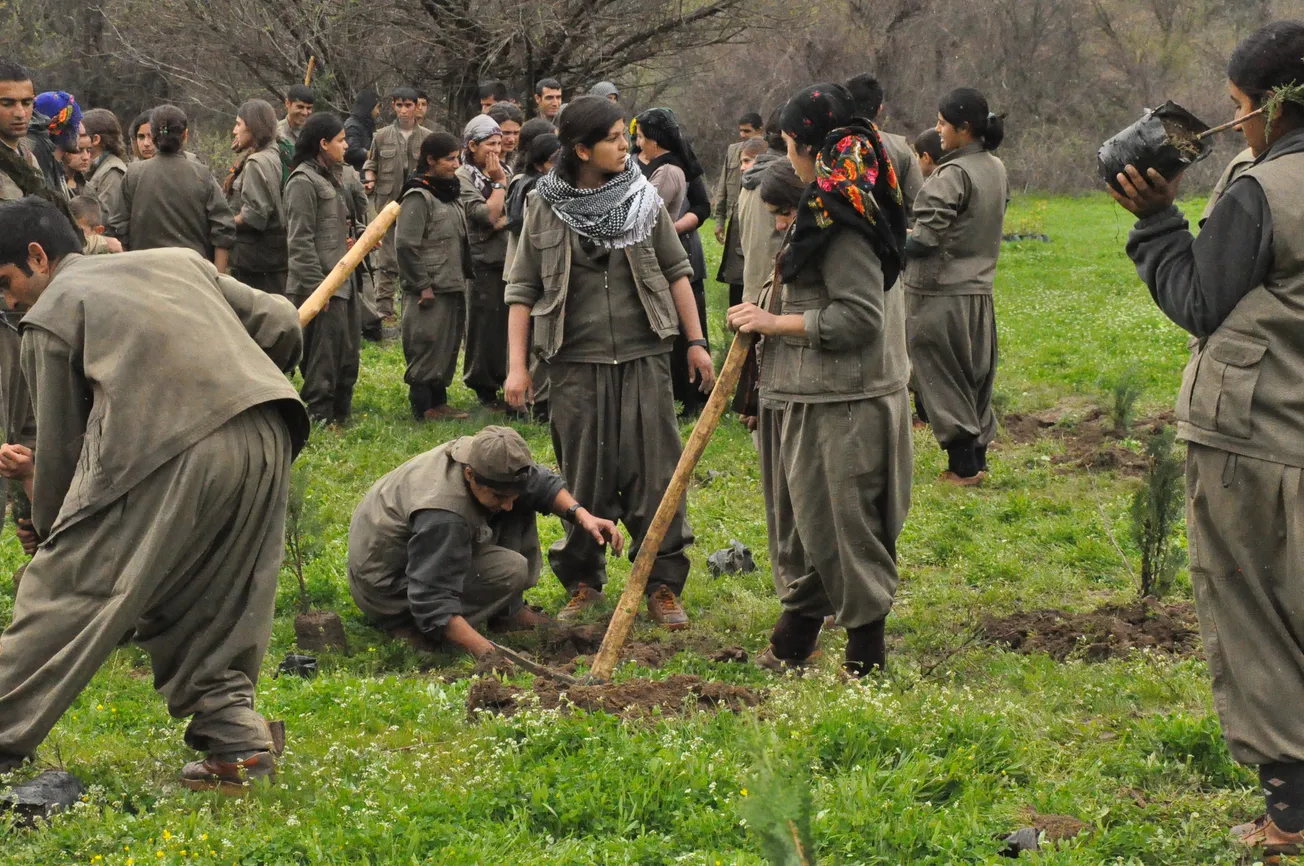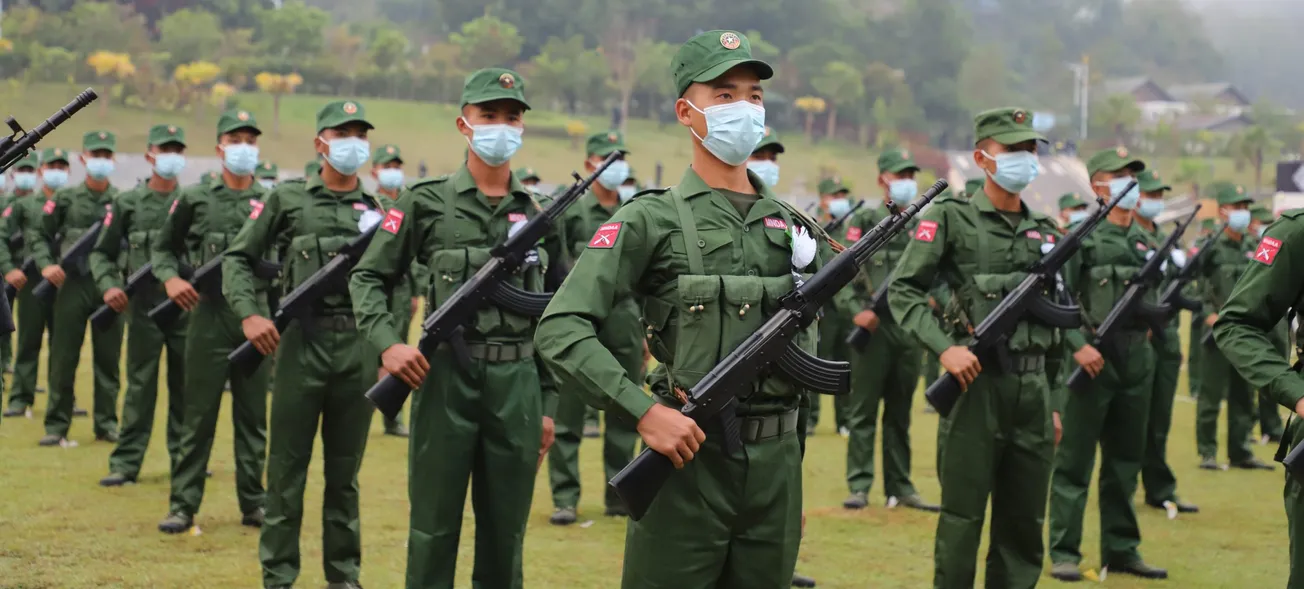Overview
The March 23 Movement (M23) is a Congolese Tutsi-led rebel military group operating primarily in the eastern Democratic Republic of Congo (DRC), specifically in North Kivu province. Formed in 2012, M23 has been a significant destabilizing force in the region, engaging in armed conflict with the DRC government and contributing to widespread displacement and humanitarian crises. The group's name refers to a peace agreement signed on March 23, 2009, between the DRC government and the National Congress for the Defense of the People (CNDP), a predecessor rebel group.
M23 has been characterized by its military capabilities, alleged support from neighboring countries, particularly Rwanda, and its impact on regional stability. The group's activities have drawn international attention and condemnation, with accusations of human rights abuses and war crimes. Despite periods of relative inactivity, M23 has demonstrated resilience and the ability to resurge, as evidenced by renewed offensives in recent years.
History
- Origins and Initial Rebellion (2012-2013): In April 2012, nearly 300 soldiers, primarily former members of the CNDP, mutinied against the DRC government. This rebellion was sparked by poor conditions in the army and the perceived failure of the government to fully implement the March 23, 2009, peace deal. The mutiny escalated tensions, particularly as ex-CNDP soldiers resisted redeployment outside their established power bases in eastern DRC. On May 6, 2012, the rebels formally announced the creation of the M23 movement. The initial phase of the rebellion saw rapid territorial gains by M23. On November 20, 2012, the group captured Goma, the capital of North Kivu province, demonstrating their military capabilities and posing a significant challenge to the DRC government. This event marked the peak of M23's initial campaign and drew international attention to the conflict.
- Defeat and Dispersal (2013-2016): Following international pressure and a counteroffensive by Congolese troops supported by UN forces, M23 was defeated militarily in late 2013. On November 7, 2013, M23 troops surrendered in Uganda, marking the end of their first significant rebellion. This defeat led to the dispersal of M23 fighters, with many fleeing to neighboring Uganda and Rwanda. After their defeat, a peace agreement was signed in December 2013 between M23 and the DRC government. However, the implementation of this agreement remained contentious, with M23 leaders claiming that their political demands were not adequately addressed.
- Dormancy and Resurgence (2017-2021): In 2017, a faction of M23 led by Sultani Makenga returned to the DRC from Uganda. Interestingly, the group remained relatively dormant during this period, controlling only a small area in eastern DRC. This period of inactivity raised questions about the group's intentions and capabilities. The situation changed dramatically in late 2021 when M23 began to escalate attacks. This resurgence marked a significant shift in the conflict dynamics of eastern DRC. The reasons behind this renewed activity remain subject to debate, but they likely include unresolved grievances and changing regional dynamics.
- Current Offensive (2022-Present): Since 2022, M23 has launched a major offensive in eastern DRC, capturing significant territory, including the strategic border town of Bunagana and Goma. This renewed campaign has once again brought M23 to the forefront of regional security concerns. The current phase of the conflict has been marked by allegations of continued external support for M23, particularly from Rwanda, and accusations of human rights abuses. These developments have reignited international concern about the situation in eastern DRC and the broader implications for regional stability.
Key Characteristics
- Ethnic Composition: M23 is primarily composed of Tutsi fighters, reflecting the complex ethnic dynamics in the region.
- Political Agenda: The group claims to fight for the rights and protection of Congolese Tutsis, including the return of Tutsi refugees from neighboring countries.
- Military Focus: While initially formed with political grievances, M23 has primarily operated as a military organization, demonstrating significant combat capabilities.
- Transnational Nature: M23's operations span the borders of DRC, Rwanda, and Uganda, complicating regional relations and security dynamics.
- Alleged External Support: The group has been accused of receiving support from neighboring countries, particularly Rwanda, which has significantly impacted its operational capabilities.
- Adaptability: M23 has shown the ability to survive defeats, regroup, and resurge, demonstrating resilience and strategic flexibility.
Key People/Actors
- Sultani Makenga: A key military leader of M23, Makenga has been instrumental in the group's formation and recent resurgence.
- Bosco Ntaganda: Known as "The Terminator," Ntaganda was a key figure in the early formation of M23. The International Criminal Court later indicted him for war crimes.
- Jean-Marie Runiga Lugerero: Served as the political leader of M23 during its initial rebellion.
- Bertrand Bisimwa: Took over as political leader of M23 after Runiga's ouster in 2013.
Key Capabilities and Tactics
- Guerrilla Warfare: M23 excels in hit-and-run tactics and ambushes, leveraging their familiarity with the rugged terrain of eastern DRC.
- Conventional Military Operations: The group has demonstrated the ability to conduct more traditional military campaigns, including capturing and controlling urban areas.
- Heavy Weapons Usage: M23 has access to and effectively utilizes a range of heavy weapons and artillery, including mortars and rocket-propelled grenades.
- Technological Integration: The group has shown proficiency in using modern communication technologies and potentially drones for reconnaissance.
- Psychological Operations: M23 employs sophisticated media and information warfare tactics to promote their cause and influence public opinion.
- Strategic Control of Key Areas: The group focuses on capturing and holding strategic locations, particularly border towns and areas rich in natural resources.
- Adaptability: M23 has consistently demonstrated the ability to adapt its tactics in response to changing military and political circumstances.
- Cross-border Operations: The group's ability to operate across national borders enhances its mobility and complicates counterinsurgency efforts.
Outlook
As of early 2025, the M23 movement continues to pose a significant challenge to stability in eastern DRC and the broader Great Lakes region:
- Persistent Threat: Despite ongoing military operations against them, M23 remains a potent force capable of launching significant offensives and controlling territory.
- Regional Implications: The group's activities continue to strain relations between DRC and its neighbors, particularly Rwanda, due to allegations of external support.
- Humanitarian Crisis: Ongoing M23 operations contribute to a worsening humanitarian situation, with large-scale displacement and food insecurity affecting hundreds of thousands of people.
- Peace Process Challenges: Failing to implement previous peace agreements and address underlying grievances complicates efforts to find a lasting solution.
- International Response: The effectiveness of international efforts to counter M23, including UN peacekeeping operations and regional initiatives, remains uncertain.
- Adaptation and Resilience: M23's demonstrated ability to survive setbacks and resurge suggests that purely military approaches to countering the group may be insufficient.
- Economic Factors: The group's involvement in illicit financial activities, particularly in the mining sector, provides a sustainable funding source that may prolong the conflict.
- Political Dynamics: The broader political situation in DRC, including upcoming elections and governance issues, will likely influence M23's strategies and the government's approach to the conflict.
Addressing the M23 threat will require a comprehensive approach that combines military action with efforts to address underlying socioeconomic grievances, improve governance in affected areas, and enhance regional cooperation. The international community's response, including diplomatic efforts and support for local initiatives, will play a crucial role in shaping the future trajectory of the conflict. However, given M23's resilience and the complex regional dynamics at play, the situation in eastern DRC will likely remain volatile in the near term.










